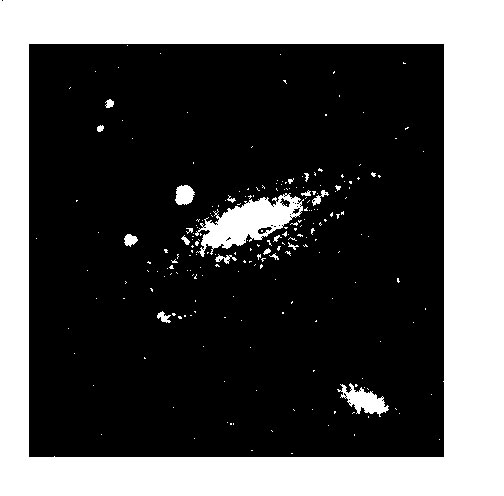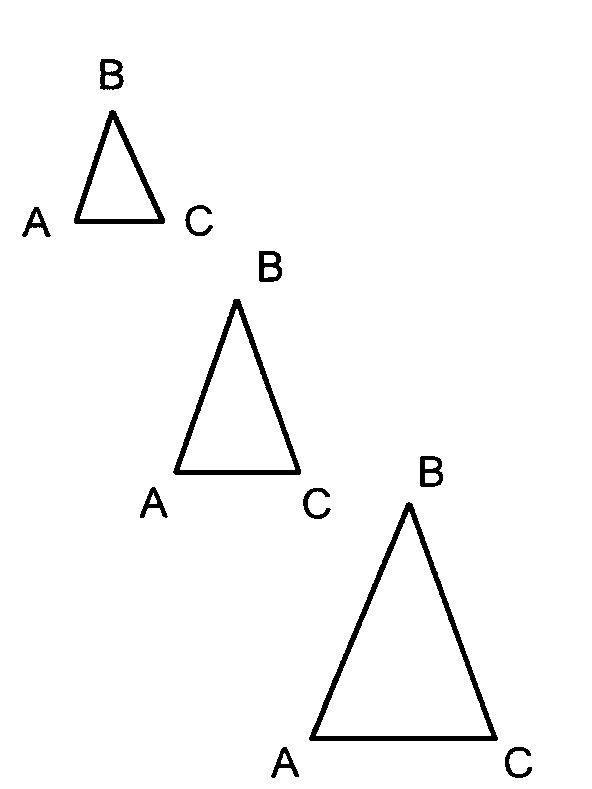Lesson 1
The Cosmos: A Proof of God’s
Existence
To The Student
The purpose if this course is to show that
you can intelligently, logically, rationally and scientifically believe
in
God and in the Bible as His Word. We do not present this course
with the
idea that we have all the answers, but we do maintain that we have more
answers
than the atheist or agnostic does to the same questions. You are
invited
to write us with your questions, comments and/or objections. We
will answer
your letter and will do our best to help you find meaningful answers to
your
questions. Your author is a former atheist who became a Christian
because
of the evidence and would like to convince you or strengthen your
conviction
that living the teachings of Jesus Christ is the key to a successful
life.
The Creation
“In the beginning God created the heaven and the earth”
(Genesis 1:1).
“The cosmos is all that is or was or ever will be” (Carl Sagan,
Cosmos).
The two statements above are both statements of faith.
Neither can
be experimentally verified and both make assumptions. The two
statements
also offer a remarkable contrast. The first statement indicates:
1. There was a beginning.
2. The beginning was caused.
3. The cause was “Elohim”--God.
The second statement indicates:
1. There was no beginning.
2. The cosmos is self-existing and thus uncaused.
3. The universe was not created and thus is the product of
nonintelligence.
Statements like the second statement are frequently offered
by those antagonistic to the existence of God. The interesting
thing is
that we can offer a considerable amount of scientific evidence that we
had
a beginning, that the beginning was caused, and that the cause was
God. Let us examine some of that evidence.
Beginning or No Beginning
 The picture to the
right is a picture of the sun. Like all stars, the sun generates
its energy by a nuclear process known as thermonuclear fusion.
Every second that passes, the sun compresses 564 million tons of helium
with 4 million tons of matter released as energy. In spite of
that tremendous consumption of fuel, the Sun has only used up 2 percent
of the hydrogen it had the day it came into existence. This
incredible furnace is not a process confined to the sun. Every
star in the sky generates its energy in the same way. All over
the cosmos are 25 quintillion stars, each converting hydrogen into
helium, thereby reducing the total amount of hydrogen in the
cosmos. Just think about it! If everywhere in the cosmos
hydrogen is being consumed and if the process has been going on
forever, how much hydrogen should be left?
The picture to the
right is a picture of the sun. Like all stars, the sun generates
its energy by a nuclear process known as thermonuclear fusion.
Every second that passes, the sun compresses 564 million tons of helium
with 4 million tons of matter released as energy. In spite of
that tremendous consumption of fuel, the Sun has only used up 2 percent
of the hydrogen it had the day it came into existence. This
incredible furnace is not a process confined to the sun. Every
star in the sky generates its energy in the same way. All over
the cosmos are 25 quintillion stars, each converting hydrogen into
helium, thereby reducing the total amount of hydrogen in the
cosmos. Just think about it! If everywhere in the cosmos
hydrogen is being consumed and if the process has been going on
forever, how much hydrogen should be left?
Suppose I attempt to drive my automobile without putting any more
gas (fuel) into it. As I drive and drive and drive, what is
eventually going to happen? I am going to run out of gas!
If the cosmos has been here forever, we would have run out of hydrogen
long ago! The fact is, however, that the sun still has 98 percent
of its original hydrogen. The fact is that hydrogen is the most
abundant material in the universe! Everywhere we look in space we
see the hydrogen 21-cm line in the spectrum--a piece of light only
given off by hydrogen. This could not be unless we had a
beginning!
 A second piece of
evidence that we had a beginning is seen in the movement of
galaxies. The picture to the left represents our part of the
cosmos. Each of the disk shaped objects is a galaxy like our
Milky Way. All of these galaxies are moving relative to each
other. Their movement has a very distinct pattern which causes
the distance between t
A second piece of
evidence that we had a beginning is seen in the movement of
galaxies. The picture to the left represents our part of the
cosmos. Each of the disk shaped objects is a galaxy like our
Milky Way. All of these galaxies are moving relative to each
other. Their movement has a very distinct pattern which causes
the distance between t he galaxies to get
greater with every passing day. If we had three galaxies located
at positions A, B, and C in the diagram to the right, and if they are
located as shown, tomorrow they will be further apart. The
triangle they form will be bigger. The day after tomorrow the
triangle will be bigger yet. We live in an expanding universe
that gets bigger and bigger and bigger with every passing day.
he galaxies to get
greater with every passing day. If we had three galaxies located
at positions A, B, and C in the diagram to the right, and if they are
located as shown, tomorrow they will be further apart. The
triangle they form will be bigger. The day after tomorrow the
triangle will be bigger yet. We live in an expanding universe
that gets bigger and bigger and bigger with every passing day.
Now let us suppose that we make time run backwards! If we are
located at a certain distance today, then yesterday we were closer
together. The day before that we were still closer.
Ultimately where must all the galaxies have been? At a
point! At a beginning! At what scientists call a
singularity!
There are many other evidences and demonstrations that can be used
to show that there was a beginning--such as the laws of
thermodynamics. For many years, skeptics maintained that all of
this evidence could be discounted on the assumption that we live in an
oscillating universe. The idea was that, as time goes by, the
cosmos was slowed down in its expansion by gravity. The theory
then proposed that eventually all of the matter in the cosmos would be
stopped in its expansion and pulled back to a new singularity which
would re-big bang and start the process all over again. New data
from the Hubble telescope and separate verification by numerous other
techniques has now shown that the cosmos is accelerating in its
expansion. We are not slowing down as we move outward into space,
but in fact we are speeding up. There is a dark energy being
added to the cosmos that we cannot measure, but which is apparently
accelerating the fabric of space/time so that everything is moving
faster and faster as it moves outward. The cosmos will not be
collapsed back to re-big bang. Fanciful theories about parallel
universes have been proposed, but even such fantastic theories do not
explain the origin of the parallel system, and they have no data that
supports them. The evidence for a beginning has gotten better
with the newest discoveries in cosmology.
Cause/No Cause
Not only can strong evidence be given to prove that we had a
beginning as the Bible says, but we can also see a logical problem in
maintaining that the cosmos was uncaused. If the universe had a
beginning and that beginning was uncaused, then something would have
had to come into existence out of nothing. From empty space with
no force, no matter, no energy, and no intelligence, matter would have
to become existent. Even if this could happen by some strange new
process unknown to science today, there is a logical problem. In
order for matter to come out of nothing, all of our scientific laws
dealing with the conservation of matter/energy would have to be wrong,
invalidating all of chemistry. All of our laws of conservation of
angular momentum would have to be wrong, invalidating all of
physics. All of our laws of conservation of electric charge would
have to be wrong, invalidating all of electronics. In order to
believe matter is uncaused, one has to discard known laws and
principles of science. No reasonable person is going to do this
simply to maintain a personal religious position.
The atheist’s assertion that matter is eternal is wrong. The
atheist’s assertion that the universe is uncaused and self-existing is
also incorrect. The Bible’s assertion that there was a beginning
which was caused is supported strongly by the available scientific
evidence. The next question is “What was the cause?” Was
the cause a personal God who created the cosmos and life with purpose
and intelligence? Or was the cause total chance--with no purpose
and no intelligence?
Julian Huxley said, “We are as much a product of blind forces as is
the falling of a stone to Earth, or the ebb and flow of the tides. We
have just happened, and man was made flesh by a long series of
singularly beneficial accidents.” It is possible to show
scientifica1ly that this statement is false. Our next lesson will
deal with “The Source: Design or Chance?”
© John N. Clayton
Lesson 1 Questions
Return to the Main Page
for the
Intermediate Correspondence Course.
10/16/2008
 The picture to the
right is a picture of the sun. Like all stars, the sun generates
its energy by a nuclear process known as thermonuclear fusion.
Every second that passes, the sun compresses 564 million tons of helium
with 4 million tons of matter released as energy. In spite of
that tremendous consumption of fuel, the Sun has only used up 2 percent
of the hydrogen it had the day it came into existence. This
incredible furnace is not a process confined to the sun. Every
star in the sky generates its energy in the same way. All over
the cosmos are 25 quintillion stars, each converting hydrogen into
helium, thereby reducing the total amount of hydrogen in the
cosmos. Just think about it! If everywhere in the cosmos
hydrogen is being consumed and if the process has been going on
forever, how much hydrogen should be left?
The picture to the
right is a picture of the sun. Like all stars, the sun generates
its energy by a nuclear process known as thermonuclear fusion.
Every second that passes, the sun compresses 564 million tons of helium
with 4 million tons of matter released as energy. In spite of
that tremendous consumption of fuel, the Sun has only used up 2 percent
of the hydrogen it had the day it came into existence. This
incredible furnace is not a process confined to the sun. Every
star in the sky generates its energy in the same way. All over
the cosmos are 25 quintillion stars, each converting hydrogen into
helium, thereby reducing the total amount of hydrogen in the
cosmos. Just think about it! If everywhere in the cosmos
hydrogen is being consumed and if the process has been going on
forever, how much hydrogen should be left? A second piece of
evidence that we had a beginning is seen in the movement of
galaxies. The picture to the left represents our part of the
cosmos. Each of the disk shaped objects is a galaxy like our
Milky Way. All of these galaxies are moving relative to each
other. Their movement has a very distinct pattern which causes
the distance between t
A second piece of
evidence that we had a beginning is seen in the movement of
galaxies. The picture to the left represents our part of the
cosmos. Each of the disk shaped objects is a galaxy like our
Milky Way. All of these galaxies are moving relative to each
other. Their movement has a very distinct pattern which causes
the distance between t he galaxies to get
greater with every passing day. If we had three galaxies located
at positions A, B, and C in the diagram to the right, and if they are
located as shown, tomorrow they will be further apart. The
triangle they form will be bigger. The day after tomorrow the
triangle will be bigger yet. We live in an expanding universe
that gets bigger and bigger and bigger with every passing day.
he galaxies to get
greater with every passing day. If we had three galaxies located
at positions A, B, and C in the diagram to the right, and if they are
located as shown, tomorrow they will be further apart. The
triangle they form will be bigger. The day after tomorrow the
triangle will be bigger yet. We live in an expanding universe
that gets bigger and bigger and bigger with every passing day.